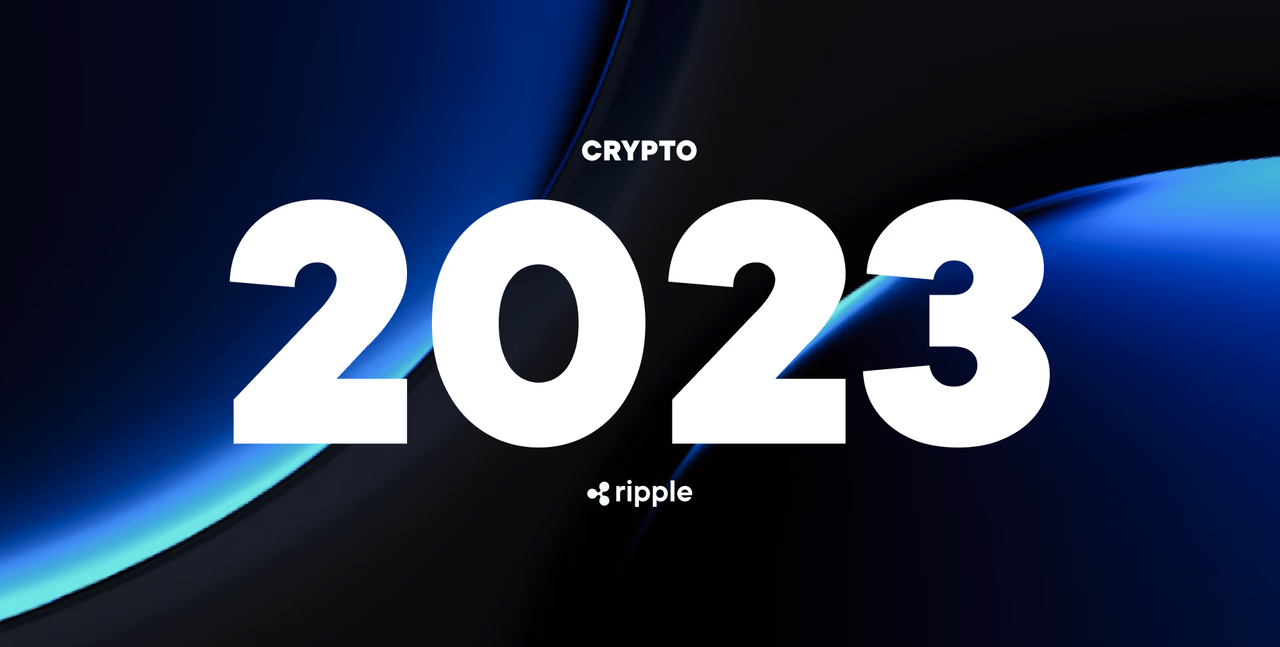The arrival of a new year is often viewed as an opportunity for a reset or a fresh start. That sense of optimism is welcome in crypto as the industry settles from a rollercoaster year. But it’s also well deserved as the negative headlines of 2022 clouded industry players that continued to make technological gains and maintained steady moves to the mainstream.
So, what does 2023 hold for crypto and blockchain? In a word: utility. This was the watchword of nearly every Ripple executive that weighed in with predictions for the year. From Non-Fungible Tokens (NFTs) to Central Bank Digital Currencies (CBDCs) to sustainability, most of the expectations for crypto this coming year involve its application for real-world utility.
CBDCs and NFTs Get Real
Partly in reaction to the turmoil of 2022, Ripple SVP of Engineering Devraj Varadhan expects to see a general shift in the marketplace from highly speculative companies to companies that harness crypto solutions to solve real-world problems and address unmet customer needs. He believes these are the companies that will reap long-term success.
A focus on real-world applications will also help propel the coming age of CBDCs. Sendi Young, Managing Director of Europe, says the potential for CBDCs to amplify the role of central banks and boost financial inclusion will lead more non-eurozone European nations to announce CBDC pilots in 2023. James Wallis, VP of Central Bank Engagements, expects to see more CBDC pilot programs around the world in the year ahead, with an emphasis on interoperable CBDC solutions that enhance cross-border payments.
This shift to utility extends to NFTs as well. While the first wave of NFTs centered around digital art and collectibles, there is already a nascent second wave exploring real-world use cases such as real estate and carbon markets. Ripple CTO David Schwartz says these types of applications that solve for efficiency and transparency in ownership will determine which use cases stick and whether NFTs are here to stay.
Institutions Double Down on Blockchain
Greater utility also lies at the root of continued institutional adoption of crypto and blockchain. Ripple SVP and Managing Director of APAC Brooks Entwistle believes concerns around liquidity will continue to weed out the crypto companies that have relied on hype cycles, and compares this evolution to the “dotcom bubble” which showed a similar case of rapid growth, inevitable crash and industry maturation. Despite the market downturn, Sendi Young expects institutions to accelerate long-term adoption of crypto solutions because of the potential gains in efficiency, transparency and speed.
“Banks and other large financial institutions will invest in new technologies with an expectation of realizing the benefits not in days and weeks, but in years, so we see the embrace of digital assets and blockchain continuing throughout 2023 and beyond,” she said.
That has already been substantiated by firms like Barclays, Goldman Sachs, JP Morgan, Mastercard, Morgan Stanley, SBI and Visa all pursuing blockchain-related projects—from crypto custody and trading, to payments and trade execution. The question for banks is no longer if they should have a crypto strategy, but rather what is that strategy and how do they plan to execute.
Greater Impact and Sustainability Through Crypto
Ken Weber, Ripple’s VP of Impact, predicts that large non-governmental organizations (NGOs) will begin to integrate crypto into their programming to better serve the financially vulnerable—such as refugees and displaced persons—because it can function as a cross-border payment mechanism when traditional corridors are compromised or ineffective.
Crypto’s real-world utility also extends to impact-oriented and sustainability-oriented initiatives. This is playing out now in Ukraine, where more than $50 million in crypto donations have helped bolster relief efforts and supported its defense against Russia. Many of the world’s top charities like Mercy Corps Feeding America accept cryptocurrency donations because it is a faster and more effective alternative to international fiat transfers when time is of the essence.
Crypto and blockchain are becoming increasingly important contributors to the fight against climate change. 2022 was a watershed year for crypto sustainability as the industry worked to reduce its own carbon footprint through the Ethereum merge and efforts like the Crypto Climate Accord that reduce Bitcoin mining’s environmental impact.
Innovative carbon removal companies like Carbon Cure, Carbon Title and Newlight began to leverage blockchain to better track and sell carbon credits, and established companies stepped up with significant financial commitments, like Ripple’s $100 million pledge to scale voluntary carbon markets and Hedera’s $100 million sustainable impact fund.
Weber says this momentum will only continue in 2023, with carbon markets emerging as a clear use case for blockchain and crypto, accelerating the shift toward a greener global economy.
Connecting the World to Web3
To help realize this utility and these impact goals, the team at Ripple expects two shifts to happen in the areas of training and development over the course of 2023.
First, in response to corporate demand and an increasingly competitive talent pool, universities will begin to more explicitly prepare graduating students for careers in crypto and blockchain solutions. Ripple’s SVP of Strategic Initiatives Eric Van Miltenburg predicts that by 2025 at least half of all global universities will have incorporated blockchain, crypto and web3 into their core business and finance programs.
Second, the industry will prioritize customer experience, specifically bridging the worlds of crypto and fiat. Varadhan says this is a major hurdle in crypto utility today and that those companies able to master the on-ramps and off-ramps to crypto will earn a significant competitive advantage for years to come.
Common Sense Policy Changes
Of course, all this growth will prove unsustainable without further clarity on policy and regulation. Andrew Whitworth, Policy Director for EMEA, expects that regulators around the world will be more engaged in 2023. In particular, Gulf States such as Dubai, Qatar, Saudi Arabia and Bahrain will push forward with new crypto frameworks for the region while countries across Africa will make a strong pitch for how to maximize crypto solutions in service to their economies and citizens.
In APAC, Policy Director Rahul Advani says growing consumer and business adoption of decentralized finance (DeFi) applications will motivate regulators like the Monetary Authority of Singapore (MAS) and Japan’s Financial Services Agency (FSA) to press ahead with efforts initiated in 2022.
Closer to home, General Counsel Stu Alderoty expects to see the Judge’s decision in Ripple’s ongoing case with the SEC in the first half of 2023—and one that’s favorable to Ripple. He believes this will be the catalyst needed to push the U.S. crypto industry forward and to stop businesses from offshoring their crypto work.
“We’ve fought this case on behalf of the entire crypto industry and American innovation so we can gain the regulatory clarity we desperately need for crypto innovation to flourish in the United States,” he said.
Susan Friedman, Ripple’s Director of Policy, concurs, saying she hopes this year will be defined by a common sense policy approach in the U.S. She is encouraged by leaders on both sides of the aisle throughout Congress engaging on new legislative solutions that protect consumers, clarify control over spot markets and properly classify tokens.
Crypto Market Maturation
2022 saw more than its fair share of collapse with companies like FTX, Celsius, Voyager and Three Arrows Capital, likely resulting in increased consolidation across the industry. Declining valuations and distressed assets will present opportunities to acquire capabilities and expertise that would otherwise require significant time and resources to build in-house.
Young predicts that more crypto and blockchain firms will also be acquired by traditional financial services players and established companies from other sectors. She says this increased consolidation is a sign of market maturation and will lead to an overall healthier ecosystem.
Ripple’s Varadhan issued perhaps the boldest prediction, foreseeing the rise of the next Apple or Amazon in crypto solutions. He believes that the crypto and economic challenges of the past year will force companies to refocus on their visions and customer needs, and that the industry will emphasize unparalleled customer experience as a result.
“To achieve any vision, a company must have a customer-obsessed culture, a long-term focus, the courage to accept failure and the willingness to double down when it sees customer delight,” he explained.
Ultimately, the entire Ripple team is optimistic that the crypto winter will give rise to a crypto spring–that 2022 will prove to have been a crucible year with the industry emerging stronger and more focused on real-world utility because of it.







